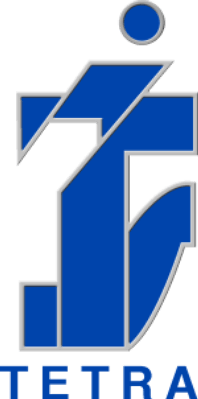What is Infrastructure Monitoring?
Infrastructure monitoring is the process of monitoring the physical and virtual components of an IT infrastructure for availability and performance. It is a key component of IT operations and helps ensure that the infrastructure can support the applications and services that run on it.
Many aspects of the infrastructure can be monitored, including the server, storage, network, and application components. Each of these has its own set of performance metrics that can be monitored.
Monitoring the infrastructure can help identify issues before they cause problems for users or applications. It can also help diagnose problems that have already occurred, and provide information that can be used to prevent similar problems from happening in the future.
There are many different tools available for infrastructure monitoring. These range from simple tools that monitor a single component to complex tools that monitor the entire infrastructure.
Advantages of Infrastructure Monitoring
There are many advantages of infrastructure monitoring, but some of the most important ones are:
- Increased uptime and reliability: By monitoring your infrastructure, you can quickly identify and fix problems before they cause downtime.
- Improved performance: Monitoring can help you identify and resolve performance bottlenecks.
- Cost savings: By monitoring your infrastructure, you can avoid expensive downtime and performance issues.
- Increased visibility: Monitoring provides you with visibility into the health and performance of your infrastructure.
- Improved customer satisfaction: You can improve customer satisfaction by providing your customers with a reliable and responsive infrastructure.
Five Best (and overlooked) Practices to Maximize IT Infrastructure Monitoring Software
- Choosing a Trusted Vendor Partner: The end-user experience of your application is significantly influenced by the infrastructure vendor you choose. Vendors who provide thorough documentation and assistance have an advantage in this competition. Before choosing a vendor, you should verify availability and MTTR though, as infrastructure downtime is unavoidable and neither support nor documentation can assist you in rapidly bringing your system back online.
- Configuring a Comprehensive Alert System: The process's next stage is to establish a thorough alert system. Your alert system should immediately notify you of any problems and be capable of grouping comparable warnings for simple reading. High specificity and high coverage are required for the system. Aim to increase the number of warnings you provide so that any new problems may be revealed right away. At the same time, you must make sure that your system doesn't produce too many notifications, which might cause noise. Some systems let you rank events in order of importance to control how strongly notifications about certain occurrences are sent. When utilized properly, this straightforward function may work wonders for your alert system.
- Implementing Redundancy: Redundancy is an excellent error-proofing strategy to take into account. Redundancy refers to having a few spare identical components in your system that can step in if an active component fails. To prevent losing crucial information if one of your monitors goes down, you must monitor the same infrastructure from different places when it comes to infrastructure monitoring.
- Review Metrics Regularly: Your work is not done until you have a good monitoring system. To ensure that your metrics are operating as planned, you must continuously monitor and assess their performance. You may not be receiving alerts on key issues owing to too high thresholds for their metrics, which would be worse than losing out on vital alerts due to the noise caused by signals from too low thresholds.
- Preferring Buying over Building Infrastructure Monitoring Tools: Everyone must decide whether to construct the monitoring components themselves or purchase them when putting up their monitoring system. It is quite alluring to save the expense of buying a tool and signing a contract with a provider. Even though it offers advantages, purchasing pre-built solutions from suppliers is a significant option. It's not necessary to commit a crew to produce and sustain another product. The majority of contemporary IT systems are sophisticated, and replicating one for your usage would require far more work than just paying a provider every month for the same system.
Infrastructure Monitoring Tools
ELK Stack and Nagios are the two most popular Infrastructure Monitoring Tools available in the market.
One of the most often used setups for monitoring and evaluating performance data is the Elastic Stack (ELK Stack). This configuration may be used to instrument and log information from your infrastructure. ElasticSearch, Logstash, and Kibana are referred to as ELK. ElasticSearch handles search and analytics, Logstash assists with ingesting and transforming data from various sources, and Kibana aids with data visualization using graphs and charts.
One of the first infrastructure monitoring programs is Nagios. Both a free enterprise solution (Nagios Core) and an open-source tool are available for it (Nagios XI). The Linux-based open-source program (Nagios Core) is very well-liked since you can customize it with both official and community plugins.
The infrastructure of a corporation has a direct impact on its posture. As the infrastructure expands along with the business, major corporations require specialized professionals to enhance performance, stability, and security. Depending on the resources available to them, businesses can decide whether to construct their monitoring system from start or to use services that are already available. It is essential because network monitoring encompasses everything from routine business operations to the security of customer data.
Contact us to learn what Nagios or ELK Stack services might look like for your organization. Allow our representative to either call you in 24 hours or E-Mail you for more details about our services - Click Here.





